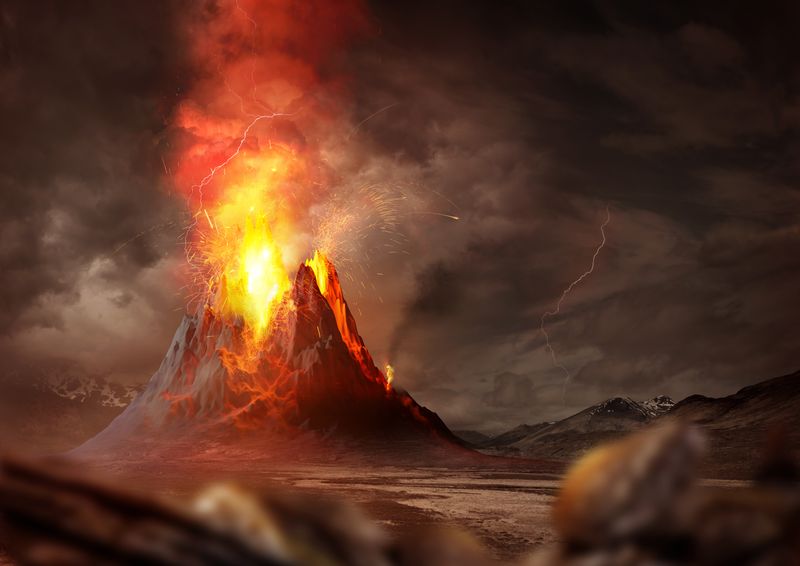The "Snowball Earth" event has always been mysterious, but now scientists think that a ginormous volcanic eruption could have been the cause of it.
Around 717 million years ago, there was an enormous climate catastrophe. The Earth’s temperatures plunged dramatically and glaciers enveloped the globe for 57 million years; from outer space it would have looked similar to a snowball, hence the name. For a long time, it was unclear as to what was the direct cause of the freeze, but now scientists have gained more understanding of this incident.
In a new study, and another published in Science Advances last year, scientists detail how they now believe that massive volcanic eruptions that occurred 1-2 million years before the Snowball Earth event could have been the cause.
It is thought that this fiery occasion could have led to the shiveringly cold experience, as fresh volcanic rocks could have gone through a chemical reaction called weathering that draws carbon dioxide out of the atmosphere, which in turn can cause the overall planetary temperature to plummet. This weathering phenomenon could have been the key reason behind the shift in Earth’s climate.
Previously, scientists have come up with all sorts of reasoning for Snowball Earth to occur, such as shifts in Earth’s orbit, meteorite strikes, and biological activity, to name a few. However, now research is focusing on one of the largest volcanic outbursts that can be found, called the Franklin large igneous province (LIP), in northern Canada. These eruptions were massive. They spurted and spewed lava over vast areas that could have been larger than China.
It is known that volcanism can trigger the cooling of Earth. A large eruption can cause the Sun to go bye-bye behind aerosols caused by sulfur-rich gases. In this incidence, lava from Franklin could have even supercharged the plumes as it furiously burst through rocks of sulfur-rich minerals. The other way is weathering, which has previously been mentioned.
The difference between both of these reasons is the timeframe. The aerosols are probably going to linger for a few months or even a few years after the event. However, weathering is a different, slow beast – it can take 1-2 million years to creep in before the cooling effects peak.
For many years it was very difficult to determine the timing for Franklin LIP, which made it very difficult for researchers to determine whether it was aerosols or weathering that was the cause of the cooling of Earth. However, this has all changed, as recovery of rare minerals has helped improve the dating of this event.
The teams analyzed trace amount ratios of uranium and lead in zircon minerals, and they found that the Franklin LIP formed over 2 million years. Previous analysis determined that a primary pulse of volcanism happened 1-2 million years before Snowball Earth – which is the right timeframe for weathering to cause the cooling of Earth.
“They’re just stunning the extent to which [the dates] all line up,” Galen Halverson, co-author of the new study, told Science.
Despite everything lining up, there is still some uncertainty about what exactly happened in this process, specifically in global glaciation. For snowballing to begin, there needs to be a flow of thick ice at sea level, which may not have happened until the oceans froze over around several hundred thousand years later.
Nevertheless, it is still good news in the science community, as the case for weathering being the cause of Snowball Earth has increased.
The new study is published in Earth and Planetary Science Letters.




